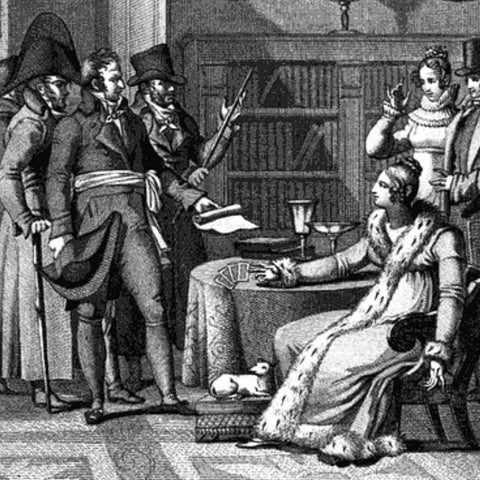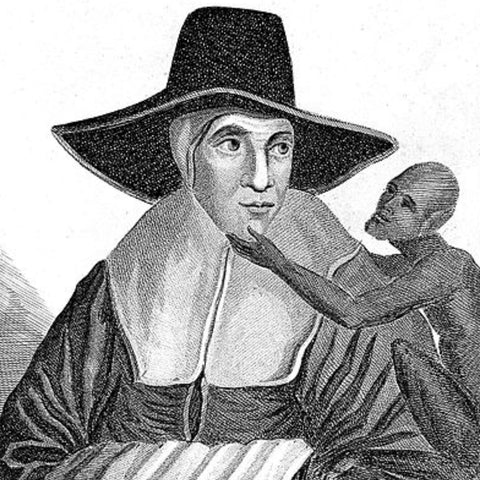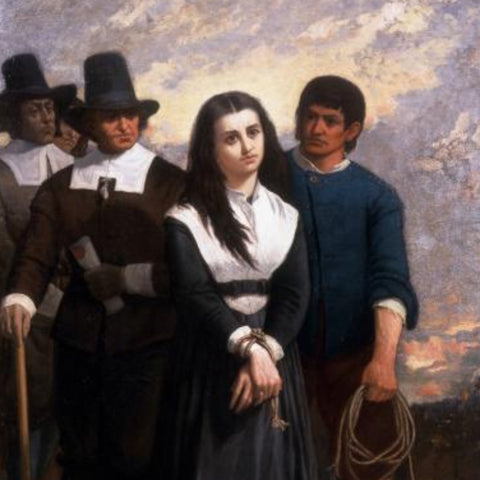In the soft glow of moonlight, the whispers of ancient wisdom dance through the air, intertwining with the scent of herbs and the enchanting allure of the arcane.
For centuries, these mystical figures, wrapped in the comforting embrace of nature, have weaved their way through the tapestry of our collective history. They are the cunning folk, the unsung heroes and heroines of times long past. Far from the shadows of witch trials and devilish associations, these healers, herbalists, and sages held an esteemed position in their communities, offering guidance, solace, and protection to those who sought their wisdom
Welcome, dear reader, to the captivating realm of the cunning folk, where the echoes of medieval history still resonate with each passing breeze. As we delve into the depths of their world, we will explore the rich tapestry of their beliefs, practices, and the powerful roles they played in shaping the spiritual landscape. From their influence on modern-day folk magic to the forgotten stories woven into folklore, this journey promises to enchant and enlighten.
Grab your favorite cup of tea and settle into your coziest nook as we embark on this journey into the captivating world of the cunning folk.
Who are the Cunning Folk?
Let's delve deeper into understanding these remarkable individuals, whose supernatural abilities, such as healing, divination, and spell-casting, made them revered members of their communities. Sought after for their wisdom and expertise, the cunning folk provided solutions to problems that seemed beyond the reach of conventional means.
These wise men and women were frequently called upon to offer an array of spiritual, medicinal, and supernatural services to their communities. From healing and divination to exorcism and protection from malevolent forces, their knowledge of herbs, charms, and spells enabled them to communicate with the spirit world. In essence, they were the walk-in clinic for rural Europe, deeply involved in all things magical and herbal.
Intriguingly, despite their mystical abilities, cunning folk were not necessarily viewed as witches or sorcerers in the traditional sense. Rather, they were often perceived as knowledgeable individuals blessed with a special connection to the divine. However, it's worth noting that this grace wasn't always extended to them in every situation (we'll delve deeper into this later).
Where Did The Term Cunning Folk Emerge from?
The term 'cunning folk' finds its roots in the 15th century, predominantly in England, Scotland, and Wales, and has an intriguing history that sheds light on the evolving perception of these skilled practitioners.
These individuals were known by a myriad of names, such as witches, wise women, and wise men, each reflecting the diverse cultural and regional perspectives on their roles and abilities.
Delving into the etymology of the term, 'cunning' is derived from the Old English word 'cunnan,' which translates to "to know" or "to have power." This highlights the core essence of cunning folk as knowledgeable individuals who wielded their powers to benefit others and protect their communities.
Contrary to some misconceptions, the term 'cunning folk' did not imply malevolence or evil intentions. Rather, these practitioners were generally seen as benevolent figures, using their unique skills for the greater good.
The various names for cunning folk across regions and time periods point to the rich tapestry of their history and practices. For instance, in England, they were often referred to as "wise men" or "wise women," while in Scotland, they were called "spae-men" or "spae-women." This diversity in nomenclature reflects the different cultural lenses through which these practitioners were viewed, as well as the specific roles they fulfilled within their communities.
Cunning Folk: A European Tour of Names and Terms
While the term "cunning folk" was primarily used in England, Wales, and Ireland, these skilled practitioners were found throughout Europe, known by various fascinating names. Let's embark on a whirlwind tour of Europe and discover the different monikers for these magical healers!
France: A Touch of Elegance
In France, folk healers went by the refined titles of devins-guérisseurs ("soothsayer-healers") and leveurs de sorts ("curse-lifters"), showcasing their diverse abilities in divination and healing.
Italy: Walking the Path of Good
Italy boasted the benandanti, which translates to "the Good Walkers." These magical practitioners were famed for their nocturnal battles against evil forces to protect their communities.
Germany: Wizards and Herb Witches
The Germans had their local healers called Hexenmeister (“wizard”) or Kräuterhexen (“Herb Witches”), known for their expertise in herbalism and spellcasting.
Finland & Karelia: Knowledge is Power
In Finno-Karelian Paganism, they revered the tietäjä (“The Knowers”), who held the keys to wisdom and were skilled in healing, divination, and protecting against dark forces.
Ireland: The Emerald Isle's Seeresses
The Irish cunning folk were known as bean feasa ("woman of knowledge"), banfháidh, or fáidhbhean ("seeress"), reflecting their wisdom and expertise in foresight.
Portugal: Virtuous Women
Last but not least, the Portuguese had their mulheres de virtude ("women of virtue"), who used their magical skills to benefit their communities.
From one corner of Europe to another, cunning folk went by different names, each highlighting a unique aspect of their abilities and roles within their communities. Isn't it fascinating to see how diverse and enchanting the world of cunning folk is, transcending borders and cultures?

Marie-Anne Lenormand, a renowned French cunning folk of the 18th and 19th centuries, gained fame as a fortune-teller and card reader, offering guidance to influential clients like Empress Josephine and French aristocracy. Born in Alençon, she moved to Paris, where she established her fortune-telling profession and authored numerous books on divination and esoteric subjects. Today, Lenormand is best remembered for her namesake Lenormand cards, a popular divination tool still used by modern cartomancy practitioners.
Cunning Folk Practices: A Blend of Old and New
Cunning folk were not only rooted in ancient traditions but also inspired by contemporary intellectual movements, such as the Renaissance and the Enlightenment. These periods of cultural awakening brought forth new ideas and practices from science, philosophy, and alchemy, enriching the practices of cunning folk and helping shape their unique philosophy.
Embracing the Magic of Nature
Both the Renaissance and the Age of Enlightenment celebrated the idea that the natural world was imbued with magical properties. By studying natural phenomena, cunning folk believed they could unlock hidden secrets and powers to benefit those who sought their help. This focus on nature's magic allowed them to harness its inherent energies and develop a deeper understanding of the world around them.
The Human Touch: Humanism and Compassion
Another essential aspect of cunning folk's philosophy was the influence of humanism, a movement that championed the inherent dignity and worth of individuals. This humanistic approach led cunning folk to treat their clients with empathy, understanding, and respect, as they sought to alleviate their physical and emotional ailments through their magical practices.
A Holistic Approach: The Cunning Folk's Toolkit
The cunning folk's practices were an eclectic mix of natural, magical, humanitarian, and homeopathic methods, designed to provide the most comprehensive care for their clients and communities. Their extensive knowledge of herbs, charms, spells, and divination techniques allowed them to address a wide array of issues, from healing physical ailments and lifting curses to offering guidance in matters of love and business.
In summary, the cunning folk's practices were a fascinating blend of ancient wisdom and contemporary thought, rooted in the belief that by harnessing the power of nature and treating others with compassion, they could bring about positive change and healing for those who sought their guidance.
Discovering the Path: Becoming a Cunning Folk
There are several intriguing paths that individuals might have taken to become cunning folk. Let's explore a few of the most common ways men and women found themselves in this unique profession:
Born into the Craft: Inherited Tradition
For some, the path to becoming cunning folk started at birth. In families or communities with a reputation for possessing magical or supernatural abilities, the knowledge and practices were passed down through generations. These individuals were trained and initiated into the tradition by family members or community elders.
The Call of the Spirits: Personal Experience or Revelation
Others claimed their powers came from personal experiences, such as dreams, visions, or near-death encounters. They might have felt chosen by a higher power or spirit to become cunning folk and use their gifts to help others.
Unlocking the Secrets: Self-Initiation or Study
A thirst for knowledge could lead individuals to seek out cunning folk practices through self-initiation or study. They might learn from books, manuscripts, or other sources, experimenting with techniques and developing their own unique practices based on personal beliefs and experiences.
A Magical Reputation: Recognition within the Community
Sometimes, an individual's reputation for magical or supernatural abilities, like healing, divination, or protection against witchcraft, led them to be recognized as cunning folk within their community.
Learning from the Masters: Training or Apprenticeship
Aspiring cunning folk might seek out established practitioners and undergo formal training or apprenticeship. This process would involve a period of study, observation, and hands-on experience under the guidance of an experienced cunning person.
Cunning Women: Navigating a Complex World
Although both men and women could become cunning folk, there were significantly more cunning women. These women had to be skillful in navigating their craft, gender stereotypes, and patriarchal structures. However, they also enjoyed a certain degree of freedom and agency compared to other women of their time, giving them a unique position in society.
By walking the fine line between magic and societal expectations, cunning women embodied the essence of their craft, creating a legacy that still captivates us today.

Mother Shipton, or Ursula Southeil, was a renowned 16th-century English cunning folk woman from Knaresborough, Yorkshire. She gained a reputation as a prophetess and healer, with her accurate predictions like the Great Fire of London in 1666 and other significant political and natural events. Her prophecies, recorded in rhymed verse, have contributed to her enduring legend, with tales of her supernatural abilities captivating people to this day.
Becoming Cunning: A Dance with Secrecy
Although cunning folk were highly respected members of their community, they often had to tread carefully to avoid the watchful gaze of the church and other authorities. Their practices, viewed with suspicion, were seen as potential threats to social order and religious orthodoxy. This delicate balance meant cunning folk frequently worked in secret, shrouded in an air of mystery.
The need for discretion became even more critical during the 16th and 17th centuries, when witch hunts swept through Europe. Many cunning folk found themselves accused of witchcraft and put on trial, their reputations as healers and wise folk suddenly transformed into sinister tales of alliances with Satan.
However, the reality of cunning folk practices was far more complex than the accusations hurled at them. Many cunning folk practiced a unique blend of folk magic, weaving together elements of paganism and Christianity. It was not uncommon for a cunning person to call upon the power of a Catholic saint to aid in their craft, further illustrating the intricate tapestry of their beliefs.
By working in secrecy and navigating the ever-shifting landscape of societal and religious expectations, cunning folk defied categorization, carving out their own unique space in history. Today, their fascinating stories continue to captivate our imaginations and offer a deeper understanding of the magical practices that have shaped our world.

Cunning folk were often sought after for their expertise in identifying and counteracting witchcraft, despite being at risk of witchcraft accusations themselves. During the witch trials, communities would turn to these individuals to help identify witches, counter spells, or provide evidence against the accused. Their involvement in trials sometimes led to convictions and even executions, illustrating the blurred lines between acceptable magical practices and those deemed malevolent or witchcraft during that era.
The Enduring Legacy of Cunning Folk
Are there still cunning folk practicing their craft today? The answer is a resounding yes! Folk magic, deeply intertwined with local communities and traditions, has persevered through the ages, passed down from generation to generation. Adapted to suit ever-changing environments, it continues to evolve while retaining its core essence.
One reason for the enduring presence of cunning folk lies in the practical nature of their work. With a focus on enhancing everyday life, cunning folk have long been instrumental in supporting their communities' health and prosperity. Their wisdom and expertise, rooted in centuries of tradition, have proven invaluable in addressing both physical and spiritual concerns.
Today, cunning folk can be found in many forms, from herbalists and spiritual healers to modern-day witches and practitioners of folk magic. They continue to draw from a rich tapestry of ancient knowledge, blending tradition with contemporary practices to serve and empower their communities.
In this age of rapid technological advancement, the enduring presence of cunning folk is a testament to the timeless appeal and relevance of folk magic. The wisdom of the cunning folk, steeped in history and shaped by the needs of their communities, continues to captivate and inspire those seeking a deeper connection with the natural and spiritual world.
Parting Thoughts on Cunning Folk
As we conclude our enchanting journey into the world of cunning folk, we hope you've enjoyed exploring their history, beliefs, and practices. The legacy of these mystical healers and wise individuals continues to inspire and captivate. May their wisdom resonate within you as a reminder of the enduring power of nature, the human spirit, and the arcane. Thank you for joining us, and may your own path be filled with magic, wisdom, and wonder.
Related Posts:
The Magic of Tasseography: Harnessing the Power of Tea Leaves

